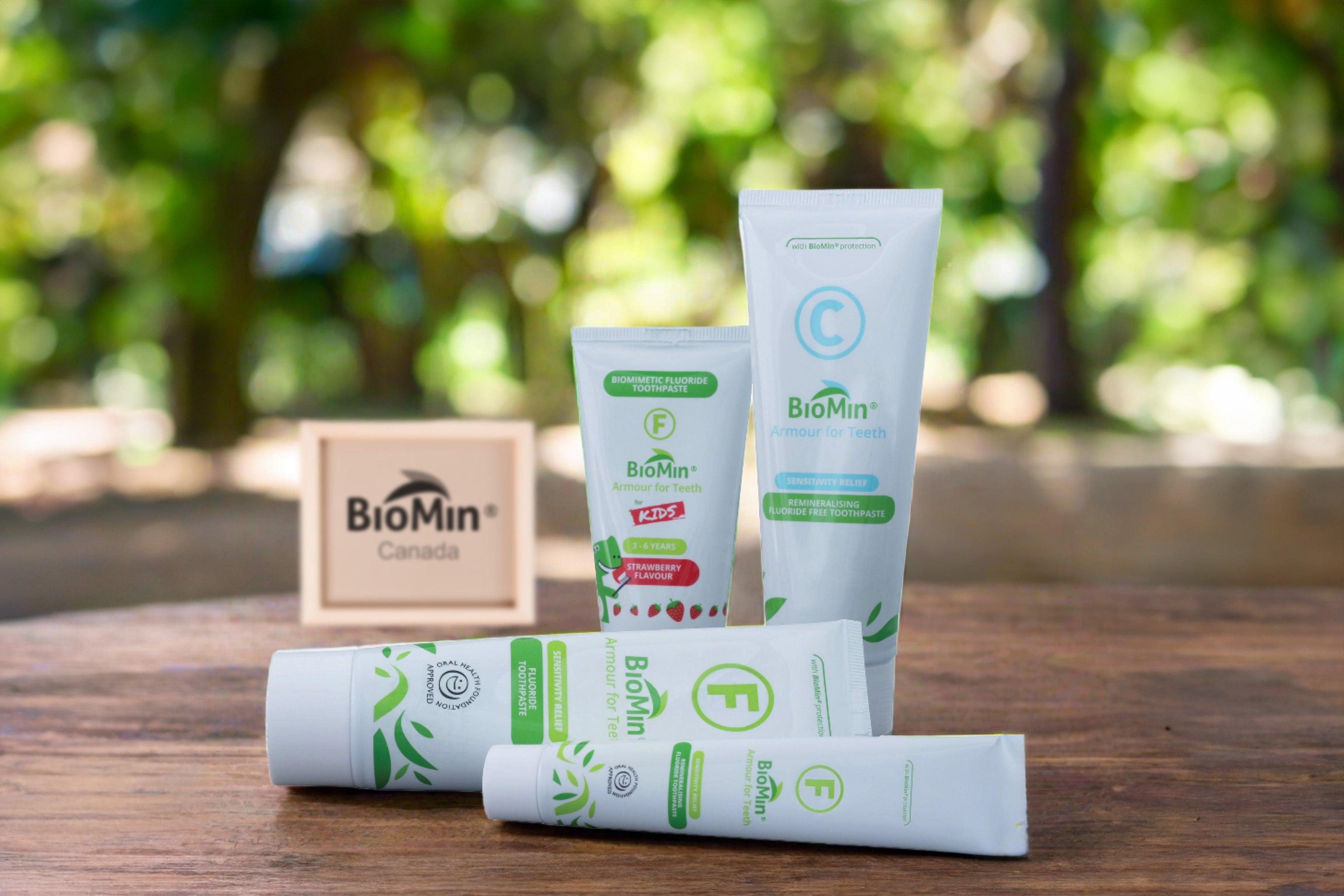Article: What are nano-HAP toothpastes and do they work as well as BioMin® F?

What are nano-HAP toothpastes and do they work as well as BioMin® F?
What are nano-HAP toothpastes and do they work as well as BioMin® F?
There seems to be a lot of press around currently about a new toothpaste ingredient, Nano-HAP, which claims to provide safe and effective remineralisation without fluoride. But what is it, how do these toothpastes really work and do they compare with BioMin F?
New types of toothpaste are constantly being launched, each with different claims as to efficacy, safety, remineralisation and other benefits. One of the latest trends is nano-hydroxyapatite (nano-HAP) toothpaste, marketed as a fluoride-free alternative, and there are now several brands available. Here we look at how these pastes work, and whether they are as effective as BioMin F at remineralising damaged tooth enamel.
What is a nano-HAP?
Originally, nano-HAPs were developed in Japan as a potential alternative to fluoride to reduce caries risk. They are based on hydroxyapatite, a synthetic version of the apatite found in natural tooth mineral. The claim is that hydroxyapatite-based toothpaste, including nano-hydroxyapatite, works by depositing hydroxyapatite particles onto the tooth surface, where they integrate into the enamel structure and help restore lost minerals.
The concept is that the HAP particles would be preferentially dissolved rather than the tooth surface when under acid attack. According to manufacturers, essentially hydroxyapatite toothpaste works by ‘remineralising enamel and restoring its strength and integrity’. It is claimed to be biocompatible and safe, with fewer side-effects compared to fluoride, and so may be attractive to people who are concerned about the possible health risks of ingesting fluoride.
So how does their mode of action compare with BioMin F?
Effectively, BioMin F works in a completely different way. A nano-HAP is an inert crystal that is broken down by the acid in the mouth when it drops below pH 6. BioMin uses advanced Bioglass technology that is biomimetic in action (ie mimics natural processes). Bound within the structure of BioMin toothpaste is a bioactive glass, or bioglass. This is designed to adhere to the tooth surface and slowly release calcium, phosphate and fluoride ions into saliva close to the tooth surface at neutral pH - and even faster when under acid attack providing greater protection when you need it most.
But do both HAP toothpastes still have the ability to occlude dentinal tubules?
In theory yes, both HAP and bioglass will create some physical occlusion of open dentinal tubules, but are they truly Nano? Actually it is the particle size (not the crystallite size) that determines their ability to go into and occlude dentinal tubules. Simply because the crystallites are nano sized doesn’t mean that the particles are nano – in fact HAP particles are typically aggregates of thousands of crystals, so are far larger than the crystallites and often too large to enter the tubule in this way. There are many different nano-HAP toothpastes on the market now, and their content and particle size vary widely.
In BioMin the calcium, fluoride and phosphate ions actively combine to form fluorapatite and precipitate, forming crystal structures integrated with the tooth surface and within dentine tubules (particularly at the tubule opening which is a strong nucleating area for crystallation). These form a protective fluorapatite layer on the tooth surface, remineralising and replenishing lost or damaged tooth enamel. In addition, the tiny particles enter and gradually plug or occlude the dentinal tubules, preventing the fluid flow that causes dentinal hypersensitivity.
The controlled, sustained release mechanism of BioMin F toothpaste means that it continues to release ions, depositing fluorapatite over up to 12 hours. This low, slow process has been shown (link to Ten Cate reference) to be the most effective way to deliver fluorapatite to the tooth surface.
Key differences

Professor Robert Hill of Queen Mary University of London, the materials scientist who has developed the bioglass in BioMin F, is sceptical about the effectiveness of nano-HAP toothpastes. ‘There are probably 20 nano-HAP toothpastes available, and they are all different, making it difficult to carry out a comparison with BioMin,’ he said. ‘Most also have too little HAP to be effective, containing typically only 1-2%. You want 5-10% by weight to have any significant effect.’
‘One thing a bioglass will do that a HAP won’t do is to raise the local pH, which is why BioMin is so good at preventing acid erosion caries,’ he explained. ‘Generally most HAP toothpastes are used without fluoride. If you use a free source of fluoride (such as sodium fluoride, NaF) it reacts with the hydroxyapatite to form fluorapatite in the toothpaste tube rather than in the mouth!’
‘In terms of remineralisation, BioMin C, which contains a bioglass without fluoride, is as good as the best nano-HAP toothpastes with fluoride. And BioMin F is even better,’ he said.
So, which toothpaste protects teeth better?
There are patients who are wary of fluoride, and rightly so, and latch on to the idea of nano-HAP toothpastes as being a fluoride-free alternative.
The problem is that there are many nano-HAP toothpastes available, with different concentrations of the active ingredient, and varying effectiveness. If, as Professor Hill explains, the levels of hydroxyapatite are lower than around 5%, the product is not effective, and the fact that the crystallites aggregate together means that they cannot enter the dentinal tubules and prevent dentine hypersensitivity.
The key difference with BioMin F is that BioMin F now has a strong body of data proving that it works, while there is little available evidence about the nano-HAP pastes. The bottom line is that the data shows that formation of apatite on the tooth surface is better controlled using a bioactive glass. For those patients who want an effective fluoride-free alternative, BioMin C has been created so that they can enjoy the added protection of BioMin and its unique technology without fluoride.










